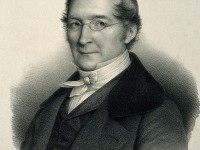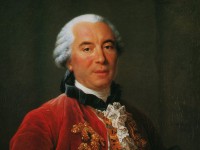
José Celestino Mutis (1732-1808)
On April 6, 1732, Spanish priest, botanist and mathematician José Celestino Mutis was born. Between 1783 and 1808, Mutis tirelessly led an extraordinary endeavor to collect and illustrate the plants of Colombia, assembling one of the richest botanical collections in the world of his time.
José Celestino Mutis – Becoming a Botanist
José Celestino Mutis began studying medicine at the College of Surgery in Cádiz. There, Mutis also studied physics, chemistry, and botany. He graduated from the University of Seville in 1755 and received his doctorate in medicine in 1757 He became a professor in Madrid and continued studying botany at the Migas Calientes Botanical Gardens. After three years he decided to leave for America, as the private physician of the new viceroy of New Granada, Pedro Messía de la Cerda. He sailed on 7 September 1760, arriving at Santa Fe de Bogotá on 24 February 1761. During the long transatlantic passage he began writing his Diario de Observaciones, which he continued until 1791. From his arrival in the Viceroyalty, Mutis concentrated on his botanical studies, beginning work on an herbal and investigating for cinchona, which was considered a panacea for the treatment of all kinds of diseases.
Ordained Priest
In the 1760s, Mutis proposed to the king that he sponsor an expedition to study the flora and fauna of the region. Unfortunately, he had to wait 20 years for the funding. In 1783, the king authorized his expedition. Meanwhile, he concentrated on commercial and mineralogical projects. In 1772 he was ordained a priest. He was in regular correspondence with scientists in Spain and elsewhere in Europe, particularly Carolus Linnaeus.[3]
The Royal Botanical Expedition
José Celestino Mutis led the Royal Botanical Expedition for 25 years. He explored thousands of square kilometers and developed a meticulous methodology that included the harvesting of the samples in the field together with detailed descriptions, including data on the surroundings of each species and its utility. Mutis discovered and described hundreds of plants and sent more than 8000 plates, plus maps, correspondence, notes and manuscripts to Spain. His museum consisted of around 24.000 dried plants
Fighting Smallpox
During the great smallpox epidemic of 1782, Mutis, despite the reticence of the rulers, implemented numerous health measures in Santa Fe de Bogotá, along with a vaccination campaign. At the urging of an elderly priest in Sopó, he investigated the use of weakened strains of the disease inoculated into healthy people and, given the people’s disbelief, did the experiment himself, introducing, through a small cut, a purulent sample from a sick person. He also inoculated some of his pupils and 36 sick children from the St. John of God orphanage in this way. After a few days neither he nor his disciples were sick and the children began to show signs of improvement. This trial convinced about a thousand people, who agreed to try the method and survived because of it.
Astronomy and Humboldt
During his time in America, José Celestino Mutis determined the longitude of Bogotá by the observation of an eclipse of a satellite of Jupiter and was a major influence on the construction of the National Astronomical Observatory. In 1762, at the inauguration of the chair of mathematics at the Collegio del Rosario, he expounded the principles of the Copernican system and of the experimental method of science, leading to a confrontation with the church. In 1774 he had to defend the teaching of the principles of Copernicus, as well as natural philosophy and modern, Newtonian physics and mathematics, before the Inquisition. In 1801, Alexander von Humboldt visited Mutis during his America expedition.[4] Humboldt stayed with Mutis for two months, and greatly admired his botanical collection.
José Celestino Mutis died in Bogotá on 2 September 1808, at age 76, a victim of apoplexy. In his honour, the genus Mutisia L.f. of the plant family of daisies (Asteraceae) was named.
JBJCM Video Institucional Jardín Botánico José Celestino Mutis, [9]
References and Further Reading:
- [1] Mutis Short Biography
- [2] José Celestino Mutis Life and Work
- [3] How a Cobbler became the ‘Princeps Botanicorum’ – Carl Linnaeus, SciHi Blog
- [4] On the Road with Alexander von Humboldt, SciHi Blog
- [5] Drawings of the Royal Botanical Expedition online
- [6] Edward O. Wilson and José Gómez Durán: Kingdom of Ants. José Celestino Mutis and the Dawn of Natural History in the New World. Johns Hopkins Univ. Press, Baltimore, Md. 2010.
- [7] Mutis y Bosio, José Celestino, “Flora de la Real Expedición Botánica del Nuevo Reino de Granada. T. 44. Quinas”. bibdigital.rjb.csic.es (in Spanish).
- [8] José Celestino Mutis at Wikidata
- [9] JBJCM Video Institucional Jardín Botánico José Celestino Mutis, Jardín Botánico de Bogotá @ youtube
- [10] Timeline of Spanish Botanists, via DBpedia and Wikidata





